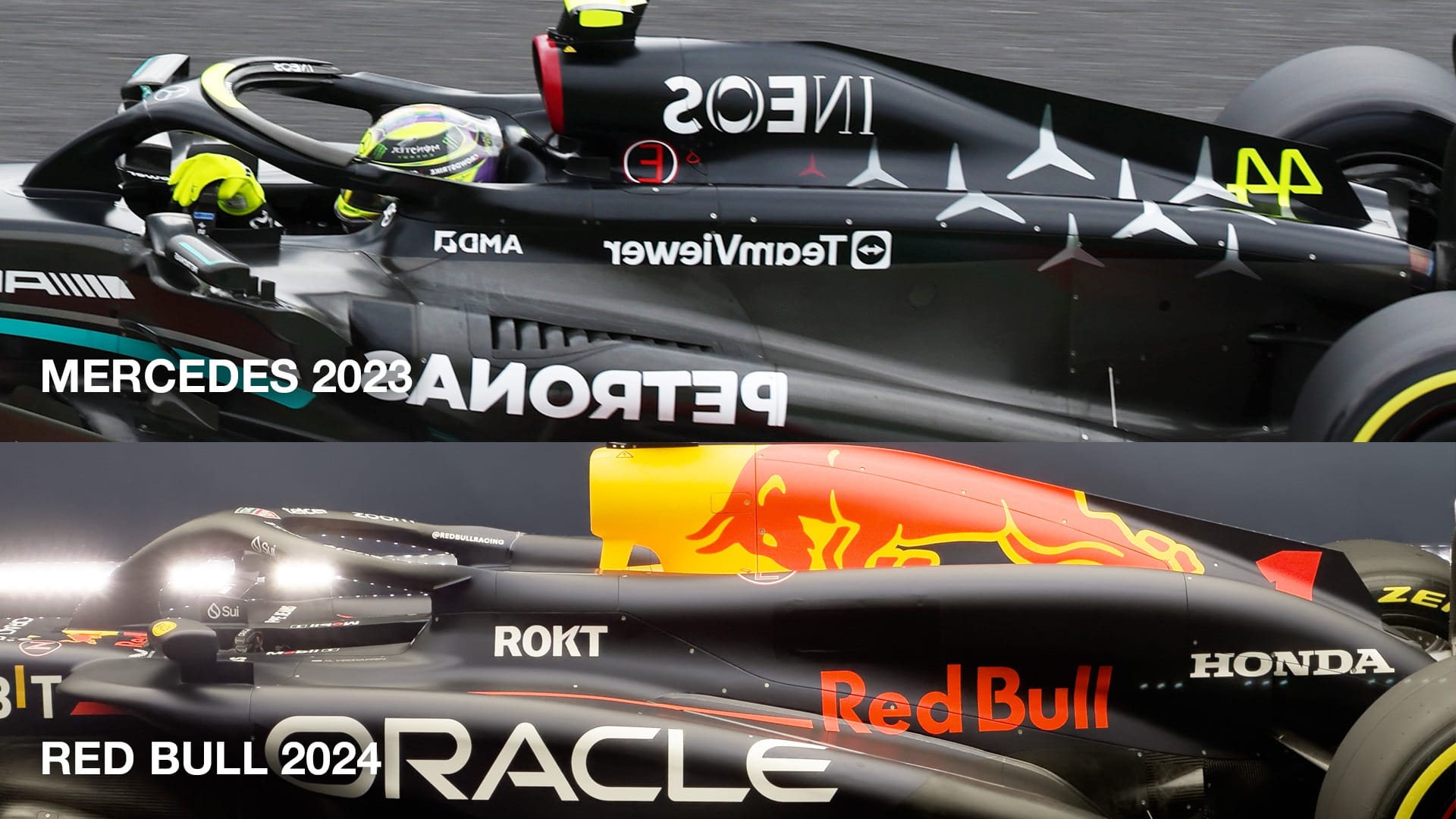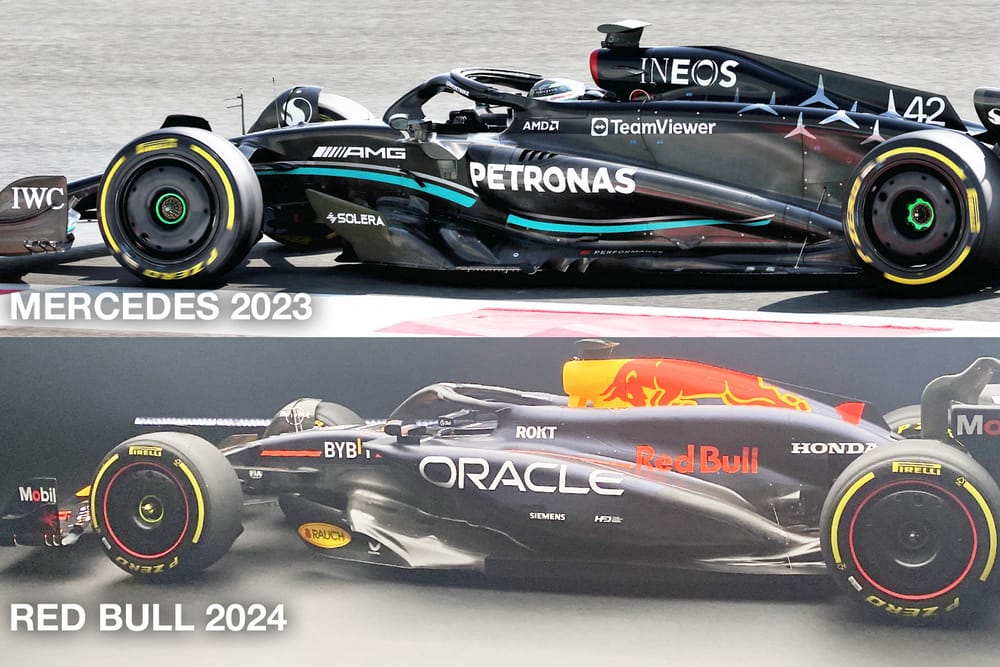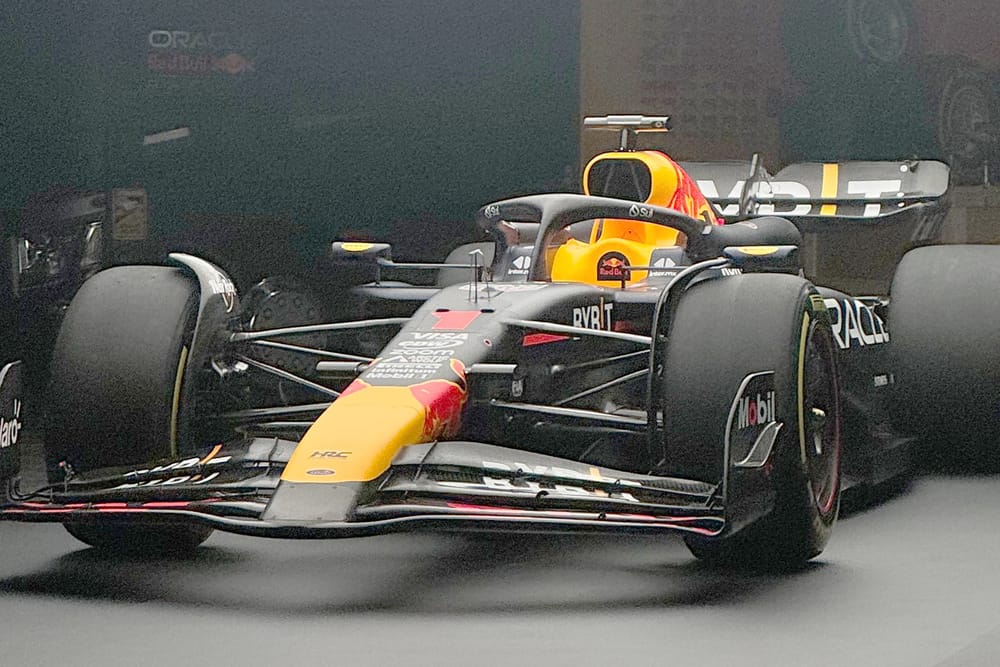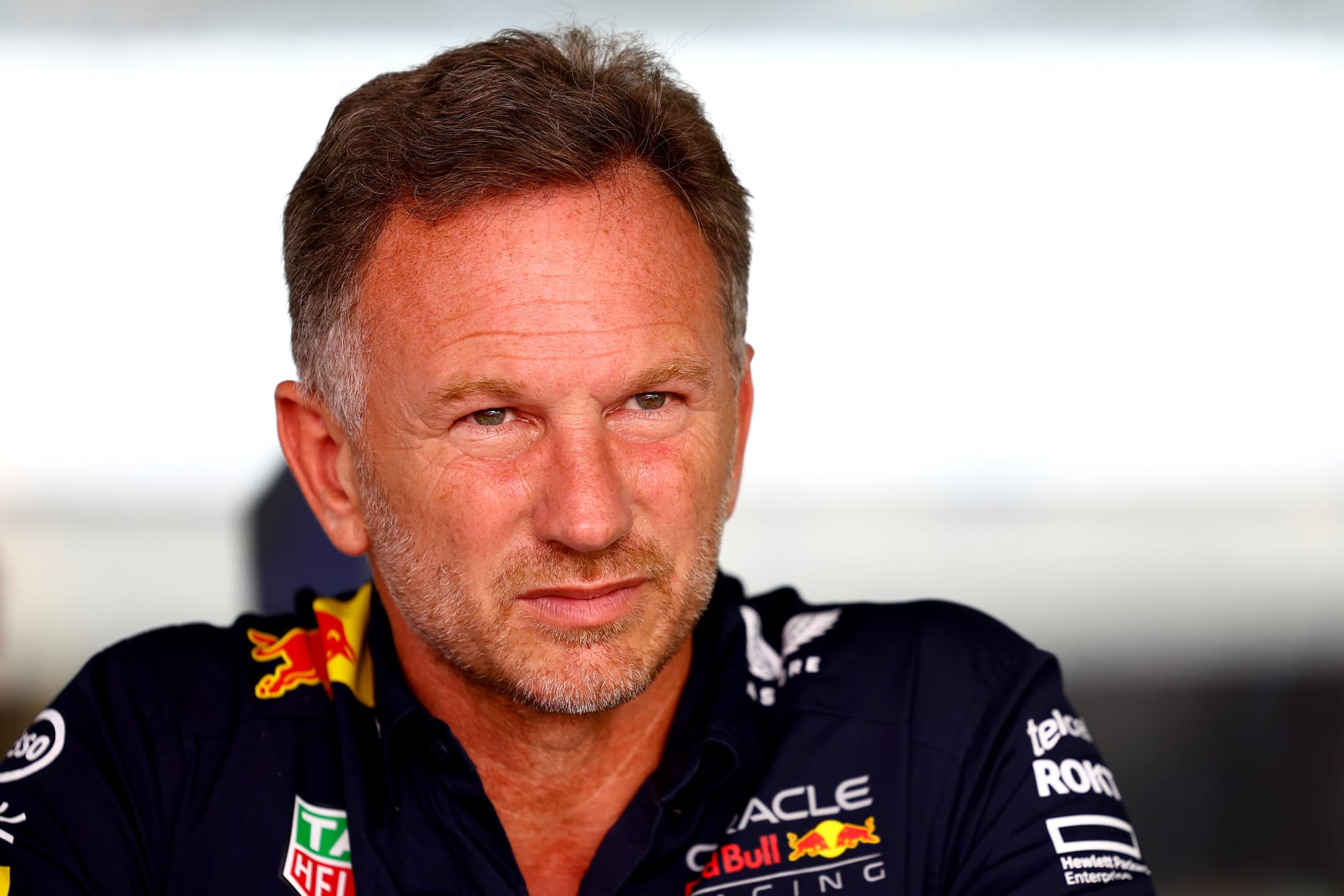Up Next

Red Bull's newly revealed RB20 has a surprising resemblance to parts of the car its fierce Formula 1 rival Mercedes has now abandoned.
What’s new on the RB20 could be summarised as Red Bull moving away from several major trends it started in this rules era and which other teams - including Mercedes - are only just embracing.
That trend hasn’t gone unnoticed by Red Bull. Team principal Christian Horner pointed out that “a few cars” look “similar in theme to what we launched last year”.
But while others are following, Horner says Red Bull’s approach has been “quite aggressive in certain areas” and the car has some “absolutely exquisite detail”.
"There’s some great innovation in the car as well and it will no doubt get scrutinised over the coming weeks," Horner said.
"Creativity has been strong in the team and you can see that in some of the solutions that they’ve come up with. It’s not a conservative evolution. There’s some real innovation on the car."
It's the back half of the car where things get interesting, as the sidepod inlet shape is similar to the initial Mercedes 2023 concept, and there are big 2023 Mercedes-style shoulders on the engine cover.

World champion Max Verstappen said he first saw the drawings of the RB20 at the last race of 2023 and thought “wow, that’s quite different”.
He was asked about the Mercedes-style engine cover and replied: "I would still call it a Red Bull-style. But I know what you mean."
His team-mate Sergio Perez probably summed it up best when asked if he was surprised the car seems to have Mercedes design elements, by replying: “Yes! A bit!"
He continued: "But at the same time it just shows how much this team is looking to move forwards and pushing all the boundaries. It’s really great to see."
There’s a big shift in design for the RB20. Almost everybody has incorporated the ‘underbite’ style inlet Red Bull took to aggressive, letterboxed-shaped lengths on its RB19 with the lower part of the inlet extended further forward.
Now it’s the top part that is most exposed on the RB20, creating a big surface beneath the wing mirrors. Underneath that is a tall, vertical inlet now in front of the sidepod, which is slimmer than before with an even bigger initial undercut.
The RB20 has big cannons that run back from the halo along the engine cover, with what looks like a narrow sunken section between the shoulders and the very top of the engine cover behind the air intake.
Some of the big surfaces Red Bull has are obviously visible and quite drastically different, although technical director Pierre Wache still describes it as “just an evolution”. Which can be consistent with seeing ideas that might have been inspired by a rival's win-less 2023 car.
Asked if Red Bull was changing direction having seemingly taken a step towards Mercedes' design from last year, Horner said: "It’s not tactical. It’s based on performance and what we’re seeing through our simulation tools.
"Obviously the car looks quite visibly different to last year in certain areas.
"Only the stopwatch will tell but in the virtual world we wouldn’t have committed it to design if we didn’t feel it was better."
Given things like the vertical radiator inlet and hulking engine cover shoulders are very 2023 Mercedes, it’s possible seeing that car last year triggered a thought that led Red Bull in a direction of resiting and shrinking the radiators and associated packaging as much as possible.
But with Red Bull being a step ahead of the others it may be finding limitations in existing designs sooner and moving to new solutions that rivals don’t even realise yet will be needed. And if its own thoughts have created or led to some similar solutions to what Mercedes had, similar is all they are because there are some differences too.
For instance a vertical inlet is nothing new, just rare for this generation of car. And Red Bull’s has actually enhanced the sidepod undercut in a way that pictures don’t do justice based on our journalists' in-person inspection of the car at the launch.
The radiator packaging is low in the sidepod, which probably explains why the outside edge bulges less and is a flatter shape than last year. But the sidepods are still serving an aerodynamic purpose, they just look like they don’t house as much as before. This is not a Red Bull 'zero-pod' approximation.
As for the engine cover cannons, they could just be the obvious cooling air route once you’ve made the radiator inlet vertical. And unlike what Mercedes had, Red Bull’s cannons slope downwards very steeply at the back of the engine cover, which could be aerodynamic gold dust for routing the airflow to the diffuser and rear wing.
Those cannons also bring the engine cover bodywork up high at the back of the car and combine with the way the slimmer sidepods wash downwards to leave a lot of space for the airflow feeding the back of the floor from the side.
Perez said that given the dominance of last year, “you wouldn’t imagine us changing the concept that much”, and called it “really brave”.
Wherever the ideas have come from, this car appears to have moved the game on.
Everyone was evolving towards the old Red Bull and now there’s a new one which, in places, looks like more than just an evolution.






